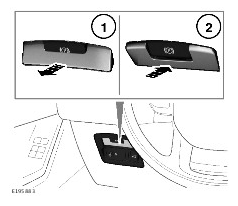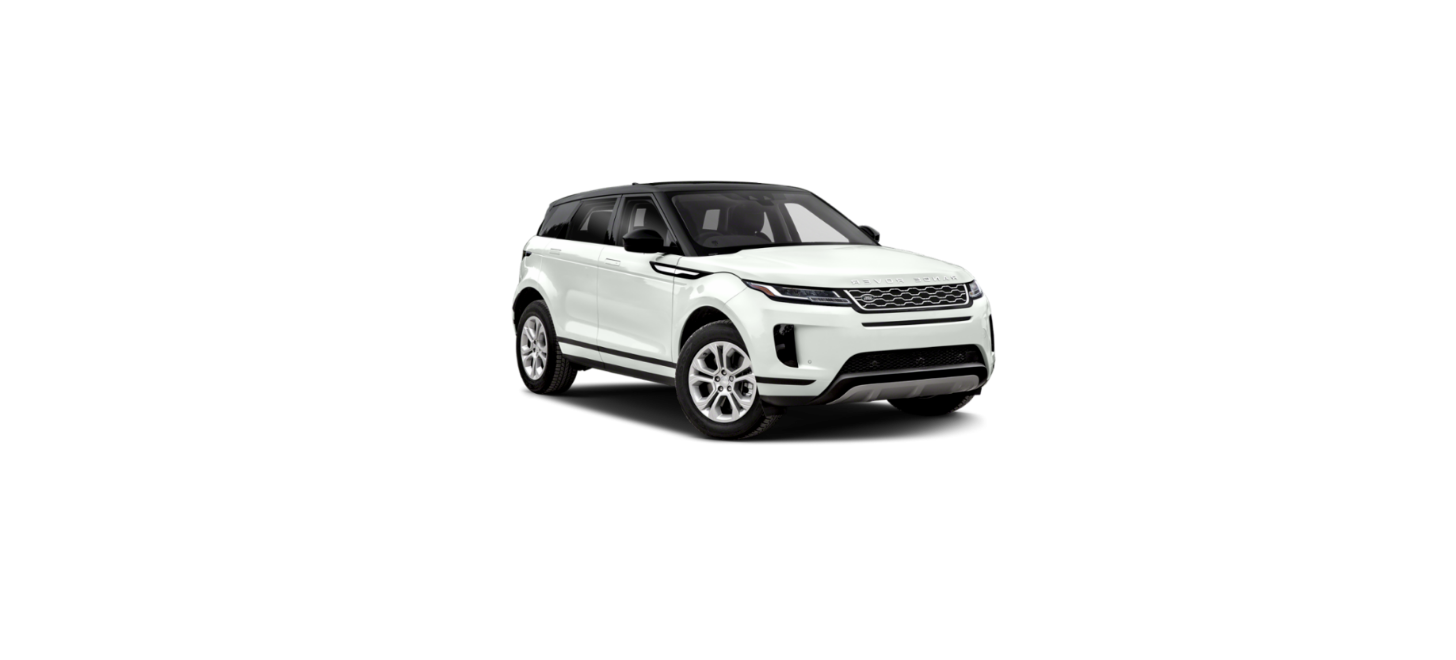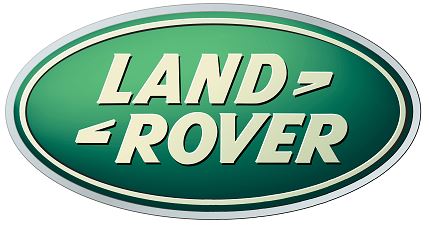2023 Land Rover Range Rover Evoque Brakes

IMPORTANT INFORMATION
Make sure the following warnings have been read and fully understood. Failure to follow the guidance given could affect vehicle safety, leading to serious injury or death.
If the red brake warning lamp illuminates, safely bring the vehicle to a stop, as quickly as possible, and seek qualified assistance.
If the amber brake warning lamp illuminates, drive with care, avoid heavy brake pedal application, and seek qualified assistance.
Do not rest a foot on the brake pedal while the vehicle is in motion. Doing so can damage the braking system and reduce braking efficiency.
Never allow the vehicle to coast (freewheel) with the engine switched off. The engine must be running to provide full braking assistance. The brakes still function with the engine switched off, but far more brake pedal pressure is required to operate them.
Never place non-approved floor matting or any other obstructions under the brake pedal. This restricts pedal travel and braking efficiency.
Driving through heavy rain or water can have an adverse effect on braking efficiency. Under such circumstances, it is recommended to lightly apply the brakes intermittently, to dry the brakes.
Do not tap the brake pedal repeatedly in quick succession at any time. Doing so interrupts the operation of the braking system and may increase stopping distances.
Do not rely on the auto hold or the on-demand features when operating the vehicle on wet or loose surfaces. The driver is responsible for operating the vehicle in line with the weather and road conditions.
If hill start assist or the electric parking brake (EPB) is not functioning, the driver cannot be assisted when pulling away on an incline. If the auto hold or the on-demand functions are not activated, the vehicle must be stopped by applying the brake pedal instead.
Despite the advantages of the brake assistance functions, it remains the responsibility of the driver to apply a safe and appropriate driving style. Always adjust the driving style to suit the road, weather, traffic, and vehicle loading conditions.
Allowing greater risks in driving as a result of the supportive brake functions may lead to loss of driving control.
Make sure to read and follow the important information and instructions contained in the warnings listed. See BRAKE (RED) and BRAKE (YELLOW).
ANTI-LOCK BRAKING SYSTEM (ABS)
The Anti-lock Braking System (ABS) on this vehicle does not create a pulsing sensation under heavy braking, unlike previous systems.
STEEP SLOPES
If the vehicle is stationary on a steep, slippery slope, it may begin to slide, even with the brakes applied. Without wheel rotation, the Anti-lock Braking System (ABS) cannot determine vehicle movement. To counteract this, briefly release the brake pedal, allowing wheel rotation. Re-apply the brake pedal to allow the ABS to gain control.
The vehicle needs to be in Neutral (N) or an appropriate gear to descend the slope. The Electric Parking Brake (EPB) must not be applied.
EMERGENCY BRAKE ASSIST (EBA)
If the brakes are rapidly applied, the Emergency Brake Assist (EBA) system automatically boosts the braking force to its maximum. The result is that the EBA system helps to bring the vehicle to a stop as quickly as possible.
The EBA system stops operating as soon as the brake pedal is released.
The amber brake warning lamp indicates an EBA system fault and the instrument panel displays a warning message. In this event, drive with care, avoiding heavy brake pedal application. Seek qualified assistance. See BRAKE (YELLOW).
ELECTRONIC BRAKE-FORCE DISTRIBUTION (EBD)
The Electronic Brake-force Distribution (EBD) system controls the balance of braking forces supplied to the front and rear wheels. The result is that the EBD system helps to maintain maximum braking efficiency and stability.
If the vehicle has a light load, e.g., driver only and no luggage, the EBD system reduces the braking force applied to the rear wheels. If the vehicle is heavily laden, e.g., passengers and luggage, the EBD system increases the braking force to the rear wheels.
The red brake warning lamp indicates an EBD system fault and the instrument panel displays a warning message. In this event, gently and safely stop the vehicle. Seek qualified assistance. See BRAKE (RED).
ELECTRIC PARKING BRAKE (EPB)
Do not rely on the Parking brake to hold the vehicle stationary if the brake warning lamp is illuminated or the EPB warning lamp is flashing. Seek qualified assistance urgently. A faulty EPB system can lead to personal injury or death.
The EPB operates on the rear wheels, therefore, secure parking of the vehicle is dependent on being on a hard and stable surface. Operating the EPB on wet or loose surfaces may lead to damage to the vehicle or personal injury.
Do not rely on the EPB to operate effectively if the rear wheels have been immersed in mud or water. Doing so may result in damage to the vehicle or personal injury.

The Electric Parking Brake (EPB) switch is located on the switch pack between the steering wheel and the driver’s door. Operate as follows:
- With the ignition switched on, press the brake pedal and pull the EPB switch out, to release the EPB.
- Push the EPB switch in to apply the EPB. The EPB warning lamp illuminates to confirm. See ELECTRIC PARKING BRAKE (EPB) (RED).
NOTES
The EPB warning lamp continues to illuminate for at least 10 seconds after the ignition has been switched off.
The EPB automatically applies when Park (P) is selected.
To prevent automatic operation, with the vehicle stationary, pull out the EPB switch in the release position before selecting P.
The EPB applies automatically if the ignition is switched off and the vehicle’s speed is below 2 mph (3 km/h).
To prevent automatic operation, when the vehicle is stationary, pull out and hold the EPB switch in the release position. Within 5 seconds, switch off the ignition and continue to hold the EPB switch for a further 2 seconds.
If the EPB is operated when the vehicle’s speed is less than 2 mph (3 km/h), the vehicle is brought to an abrupt stop. The stop lights do not illuminate.
Driving the vehicle with the EPB applied will cause serious damage to the braking system.
When stationary, with the EPB applied and the transmission engaged in forward gear or reverse, press the accelerator pedal gradually to release the EPB. The result is that the vehicle can be driven away smoothly.
When shifting from P with the EPB applied, the EPB automatically releases to allow a smooth drive away.
Automatic EPB release for pulling away from a standstill is only possible when the driver’s door is closed or the driver’s seat belt is buckled.
To override the EPB automatic release, push the EPB switch in and hold.
If an EPB fault is detected, a warning message appears in the instrument panel. The amber brake warning lamp also illuminates. See BRAKE (YELLOW).
If a fault is detected during EPB operation, a warning message appears in the instrument panel. The red EPB warning lamp also flashes. See ELECTRIC PARKING BRAKE (EPB) (RED).
In an emergency, apply and hold the EPB switch to give a controlled reduction in the vehicle’s speed. The vehicle can also be brought to a complete stop. The vehicle must be traveling at more than 2 mph (3 km/h), and the accelerator pedal must also be released. The brake warning lamp flashes, a warning chime sounds and a warning message appears in the instrument panel. The stop lights illuminate. Release the EPB switch, or press the accelerator pedal to releases the EPB.
To protect against unintentional vehicle movement, the EPB is automatically applied when the driver is detected to be exiting the vehicle. The EPB is applied when Drive (D), Neutral (N), Reverse (R) or Sport (S) is selected and all the following conditions exist:
- The vehicle is stationary.
- The driver’s door is opened.
- The brake pedal is released.
The EPB drive away feature operates if:
- The EPB is applied.
- The engine is running.
- A forward or reverse gear is selected.
- The driver’s seat belt is fastened or the driver’s door is closed.*
- The accelerator pedal is pressed.
* If it is believed the driver has left the vehicle, only the driver’s seat belt is monitored.
The vehicle may move briefly before the EPB is applied. On a steep slope, the EPB does not apply if significant vehicle speed is reached as the brake pedal is released.
If the EPB is released and the driver exit conditions are still met, the EPB will automatically re-apply after a short period of time.
BRAKE HOLD
The brake hold functions act on all four wheels. Under the specified conditions, the brake hold functions apply the Electric Parking Brake (EPB) automatically on the rear wheels only. On steep or loose slopes, especially when facing downhill, applying the EPB may cause the vehicle to skid. Re-apply the brake pedal to secure the vehicle. Failure to do so may result in serious injury or death.
To avoid damage to the vehicle it is recommended to disable all brake hold functions when using an automated car wash that propels the vehicle. Failure to do so could cause damage to the vehicle.
Take care when using brake hold, there may be some vehicle movement while the function is active. There may be increased vehicle movement during a cold engine start when the idle speed is high. On slippery or loose surfaces such as gravel, there may be some wheel spin or skidding while brake hold is active.
The brake hold functions maintain the vehicle in a standstill position without the brake pedal having to be pressed continuously.
When a brake hold function is active, the instrument panel illuminates the brake hold lamp.
The brake hold functions operate in Reverse (R), Neutral (N), Drive (D) and Sport (S). Brake hold maintains hydraulic brake pressure in the braking system until the accelerator pedal is applied.
The engine may auto stop while the brake hold function is active. When driving away, there is a slight delay after the accelerator is pressed, while the engine restarts.
Auto hold can be enabled or disabled via the touchscreen. See AUTO BRAKE HOLD.
Brake hold can still be activated even when auto hold has been disabled, by giving a firm press on the brake pedal.
To activate brake hold when auto hold is disabled, the vehicle must first be at a standstill and the driver must then give the brake pedal a quick firm press. Brake hold can be activated in this way in R, N, D or S.
The brake hold functions release hydraulic brake pressure and apply the EPB and then deactivate if:
- The brake hold function has been active for more than 5 minutes.
- The driver’s seat belt is unbuckled while a brake hold function is active.
- The driver’s door is opened while a brake hold function is active.
The brake hold functions are unavailable if:
- The driver’s seat belt is unbuckled or the driver’s door is opened.
- If Park (P) is selected.
- The EPB is applied. See ELECTRIC PARKING BRAKE (EPB).
- Hill Descent Control (HDC) is active.
- All Terrain Progress Control (ATPC) is active and the vehicle is being driven downhill.
- Adaptive cruise control queue assist is active.
- The vehicle’s engine is switched off manually.
The brake hold functions do not operate if there is a fault with:
- Dynamic Stability Control (DSC).
- The braking system.
- The EPB system.
AUTO BRAKE HOLD
The brake hold function controls the operation of auto hold. See BRAKE HOLD.
The auto hold function applies the brakes automatically to prevent the vehicle rolling back downhill. The auto hold function also holds the vehicle on uphill or downhill slopes whenever it is brought to a stop using the brake pedal.
The auto hold function is unavailable if the vehicle is engaged in Neutral (N) or Park (P).
To disable and re-enable auto hold:
- Touch the settings icon¹ from any screen.
- Touch the QUICK soft key.
- Touch the HOLD soft key.
- Touch the exit icon² to return to the previously displayed screen.
To disable the Auto hold function while it is holding the vehicle on the brakes, press the brake pedal and touch the HOLD soft key.
Settings icon.¹
Exit icon.²
To disable and re-enable auto hold:
- Touch the VEHICLE icon¹ from any screen.
- Touch the HOLD soft key.
To disable the auto hold function while it is holding the vehicle on the brakes, press the brake pedal and touch the HOLD soft key.
VEHICLE icon.¹
HILL START ASSIST
Hill start assist briefly holds the vehicle stationary after the brake pedal is released, when pulling away uphill. The system allows the driver time to release the brake pedal and press the accelerator pedal. When the accelerator pedal is pressed, the system smoothly releases the brake pressure, allowing the vehicle to pull away without rolling backward.
Hill start assist operates if the auto brake hold function has been disabled. See BRAKE HOLD.
Hill start assist is not available if there is a Dynamic Stability Control (DSC) fault. See DYNAMIC STABILITY CONTROL (DSC) (YELLOW).

